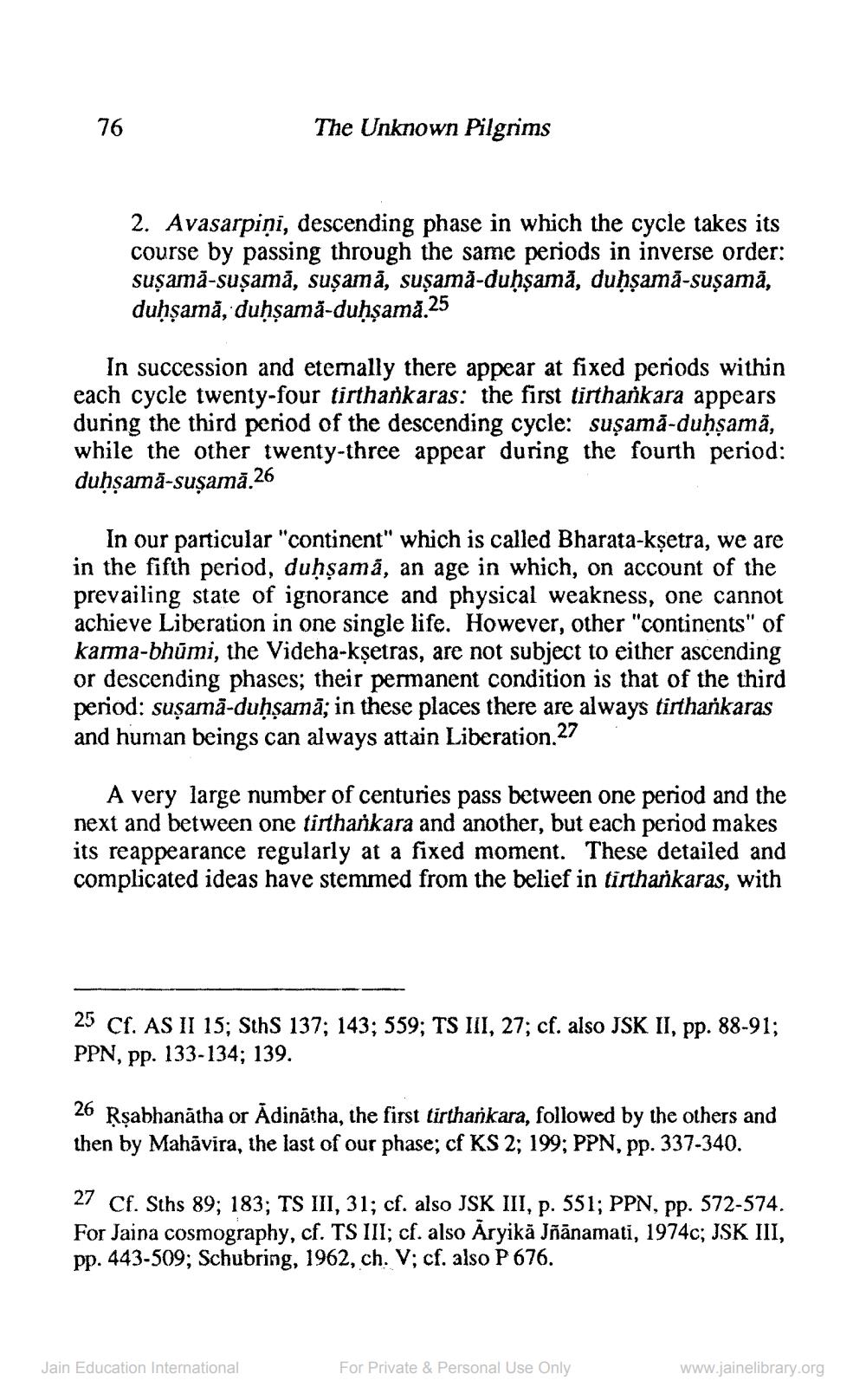________________
76
The Unknown Pilgrims
2. Avasarpiņi, descending phase in which the cycle takes its course by passing through the same periods in inverse order: suşamā-suşamă, suşamă, suşama-duḥşamă, duḥşamā-suşamă, duhşamă, duhşamā-duḥşama.25
In succession and eternally there appear at fixed periods within each cycle twenty-four tirthankaras: the first tirtharikara appears during the third period of the descending cycle: suşama-duḥsamā, while the other twenty-three appear during the fourth period: duhşamā-suşamā.26
In our particular "continent" which is called Bharata-kşetra, we are in the fifth period, duhşamă, an age in which, on account of the prevailing state of ignorance and physical weakness, one cannot achieve Liberation in one single life. However, other "continents" of karma-bhūmi, the Videha-kşetras, are not subject to either ascending or descending phases; their permanent condition is that of the third period: suşamā-duhşamā; in these places there are always tirthankaras and human beings can always attain Liberation.27
A very large number of centuries pass between one period and the next and between one tirthankara and another, but each period makes its reappearance regularly at a fixed moment. These detailed and complicated ideas have stemmed from the belief in tirthankaras, with
25 Cf. AS II 15; Sths 137; 143; 559; TS III, 27; cf. also JSK II, pp. 88-91; PPN, pp. 133-134; 139.
26 Rşabhanātha or Ādinātha, the first tirthankara, followed by the others and then by Mahāvira, the last of our phase; cf KS 2; 199; PPN, pp. 337-340.
27 Cf. Sths 89; 183; TS III, 31; cf. also JSK III, p. 551; PPN, pp. 572-574. For Jaina cosmography, cf. TS III; cf. also Āryikä Jñānamati, 1974c; JSK III, pp. 443-509; Schubring, 1962, ch. V; cf. also P 676.
Jain Education International
For Private & Personal Use Only
www.jainelibrary.org




